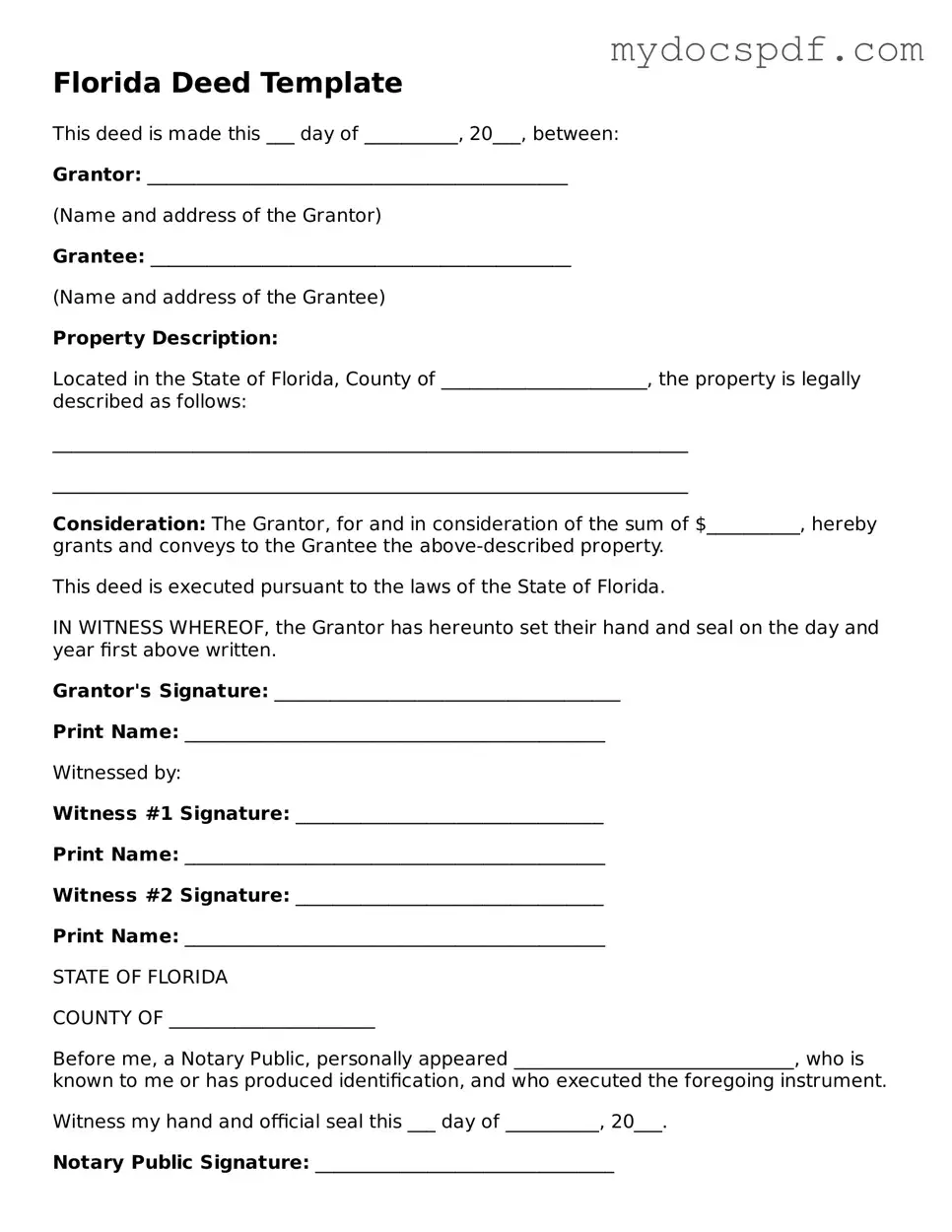Florida Deed Template
This deed is made this ___ day of __________, 20___, between:
Grantor: _____________________________________________
(Name and address of the Grantor)
Grantee: _____________________________________________
(Name and address of the Grantee)
Property Description:
Located in the State of Florida, County of ______________________, the property is legally described as follows:
____________________________________________________________________
____________________________________________________________________
Consideration: The Grantor, for and in consideration of the sum of $__________, hereby grants and conveys to the Grantee the above-described property.
This deed is executed pursuant to the laws of the State of Florida.
IN WITNESS WHEREOF, the Grantor has hereunto set their hand and seal on the day and year first above written.
Grantor's Signature: _____________________________________
Print Name: _____________________________________________
Witnessed by:
Witness #1 Signature: _________________________________
Print Name: _____________________________________________
Witness #2 Signature: _________________________________
Print Name: _____________________________________________
STATE OF FLORIDA
COUNTY OF ______________________
Before me, a Notary Public, personally appeared ______________________________, who is known to me or has produced identification, and who executed the foregoing instrument.
Witness my hand and official seal this ___ day of __________, 20___.
Notary Public Signature: ________________________________
Print Name: _____________________________________________
My Commission Expires: _________________________________
